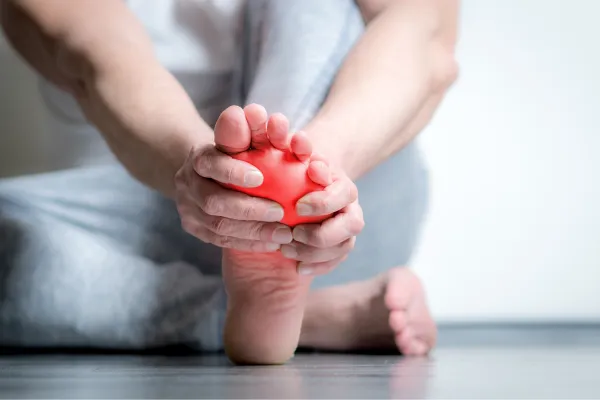
Poor Circulation and Foot Pain: Is It a Sign of Something Serious?
Have your feet been feeling cold, numb, or painful lately—especially when you're walking or lying down? These could be signs of poor circulation. And yes, it can be a warning flag for something more serious going on in your body.
Let’s talk about why circulation matters, what’s behind the discomfort, and how podiatry care can help.
Why Circulation in Your Feet Matters
Your feet are the farthest part of your body from your heart. That means your blood has a long way to travel to reach them—and even longer to get back up. If anything slows that flow down, your feet are usually the first to feel it.
Good blood flow brings oxygen and nutrients to your muscles, skin, and nerves. It also helps remove waste from your cells. When circulation slows or gets blocked, your tissues can start to suffer—and hurt.
Common Signs of Poor Circulation in the Feet
Poor circulation doesn’t always scream for attention. Sometimes, the symptoms are quiet at first. Here’s what to look out for:
Cold feet that don’t warm up easily
Tingling, numbness, or “pins and needles”
Leg or foot pain when walking that goes away with rest (this is called claudication)
Skin discoloration—like feet that look bluish or pale
Slow-healing cuts or sores
Shiny skin or loss of hair on your legs or feet
Cramping in your calves or feet at night
If you’ve noticed more than one of these signs, it’s worth talking to a podiatrist.
What Causes Poor Circulation?
There are a few main reasons why your blood might not be moving the way it should:
1. Peripheral Artery Disease (PAD)
PAD happens when arteries in your legs get narrowed or blocked due to plaque buildup. It’s one of the most common—and serious—causes of poor circulation in the feet.
2. Diabetes
High blood sugar can damage blood vessels over time, slowing down circulation and increasing the risk of wounds and infections.
3. Smoking
Smoking thickens your blood and damages the lining of your arteries. This reduces blood flow and oxygen to your feet.
4. High Blood Pressure or High Cholesterol
Both of these can strain your arteries and lead to narrowing or blockages.
5. Blood Clots or Vein Conditions
In some cases, clots or damaged veins can limit circulation and cause swelling, pain, or changes in skin color.
Is It Something Serious?
Sometimes, foot pain caused by poor circulation is just the tip of the iceberg. It might be pointing to a larger health issue like:
Heart disease
Stroke risk
Uncontrolled diabetes
Chronic wounds or infections that don’t heal
This is why it's important not to ignore circulation problems. Getting a proper evaluation can help catch conditions early—when they’re easier to manage.
How a Podiatrist Can Help
At American Surgeons Group, we specialize in identifying and treating foot issues linked to poor circulation. Here's what we can do:
Perform circulation tests in-office (like ABI testing or Doppler scans)
Check for nerve damage or skin breakdown
Create a care plan to improve healing and comfort
Coordinate care with your primary doctor or cardiologist if needed
Treat foot ulcers, pressure sores, or infections before they get worse
We also give you practical advice for home care—like how to keep your feet clean, warm, and protected.
Don’t Wait for Foot Pain to Get Worse
Foot pain that’s caused by poor circulation won’t usually go away on its own. And waiting can lead to bigger problems, like infections or even amputation in severe cases.
If something feels “off” in your feet—coldness, pain, numbness, or color changes—it’s time to check in with a podiatrist.
We’re Here to Help
Our team at American Surgeons Group understands how scary foot problems can be, especially when they’re tied to circulation or chronic health conditions. The good news? You're not alone, and there are treatments that work.
Let’s get your feet feeling better—and keep you moving.
